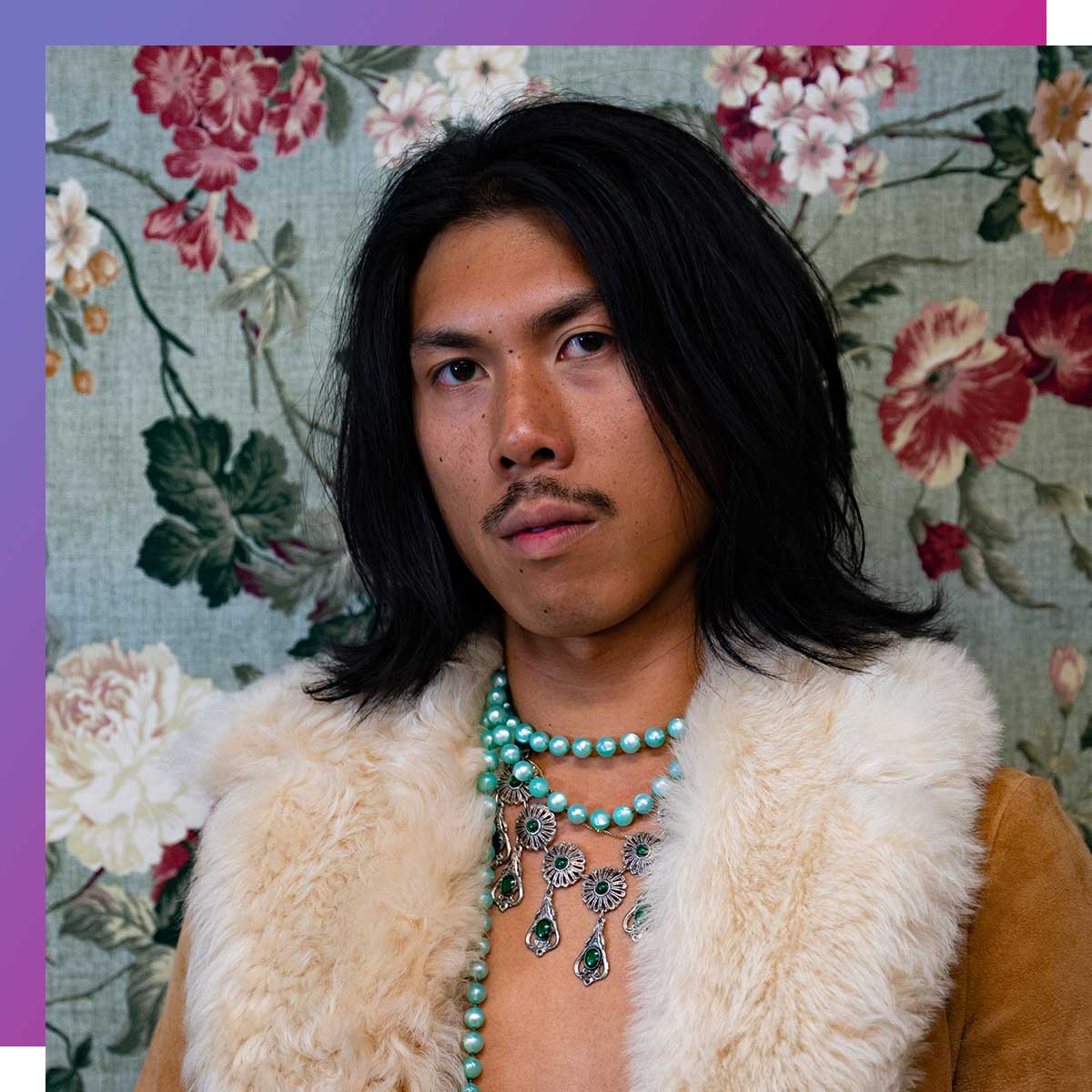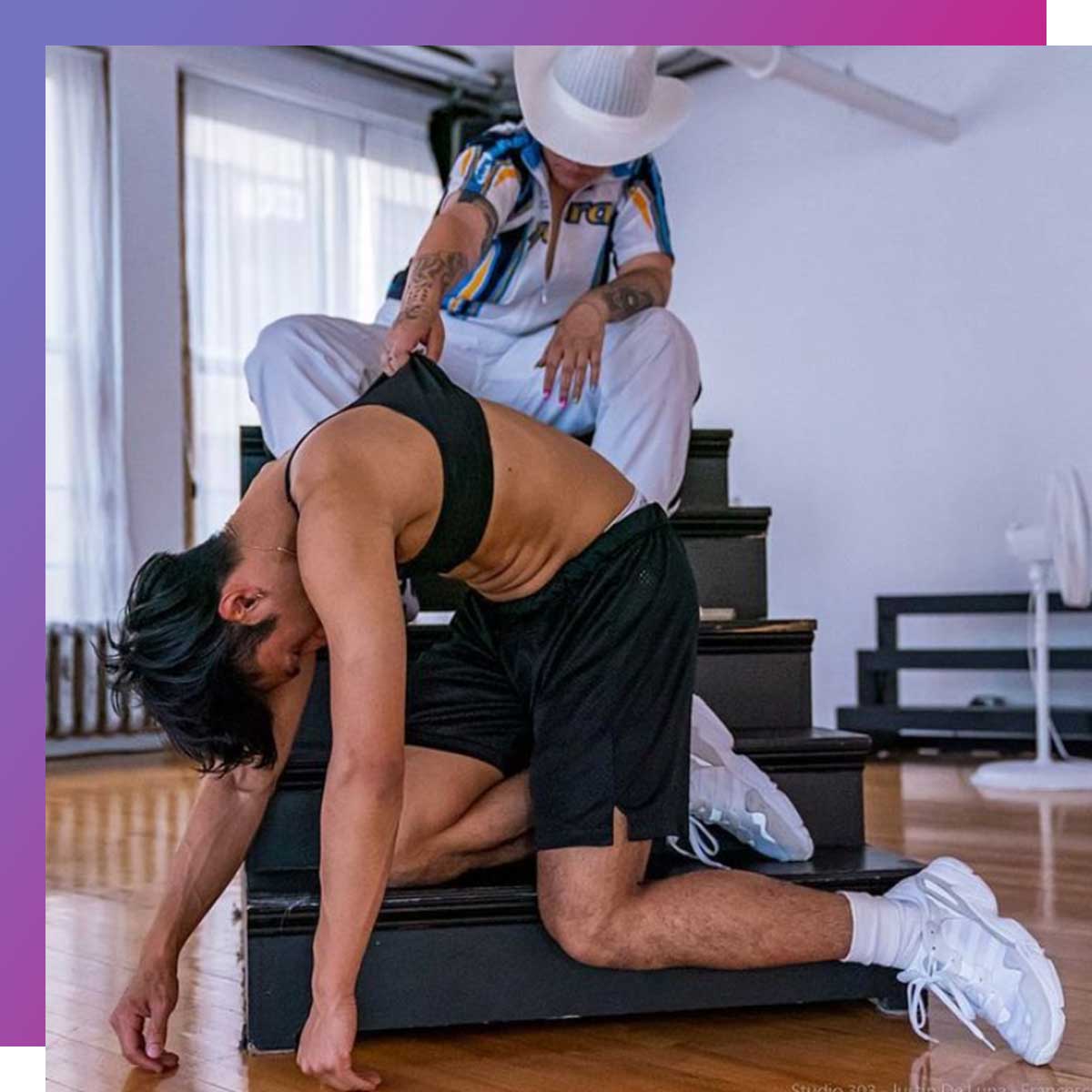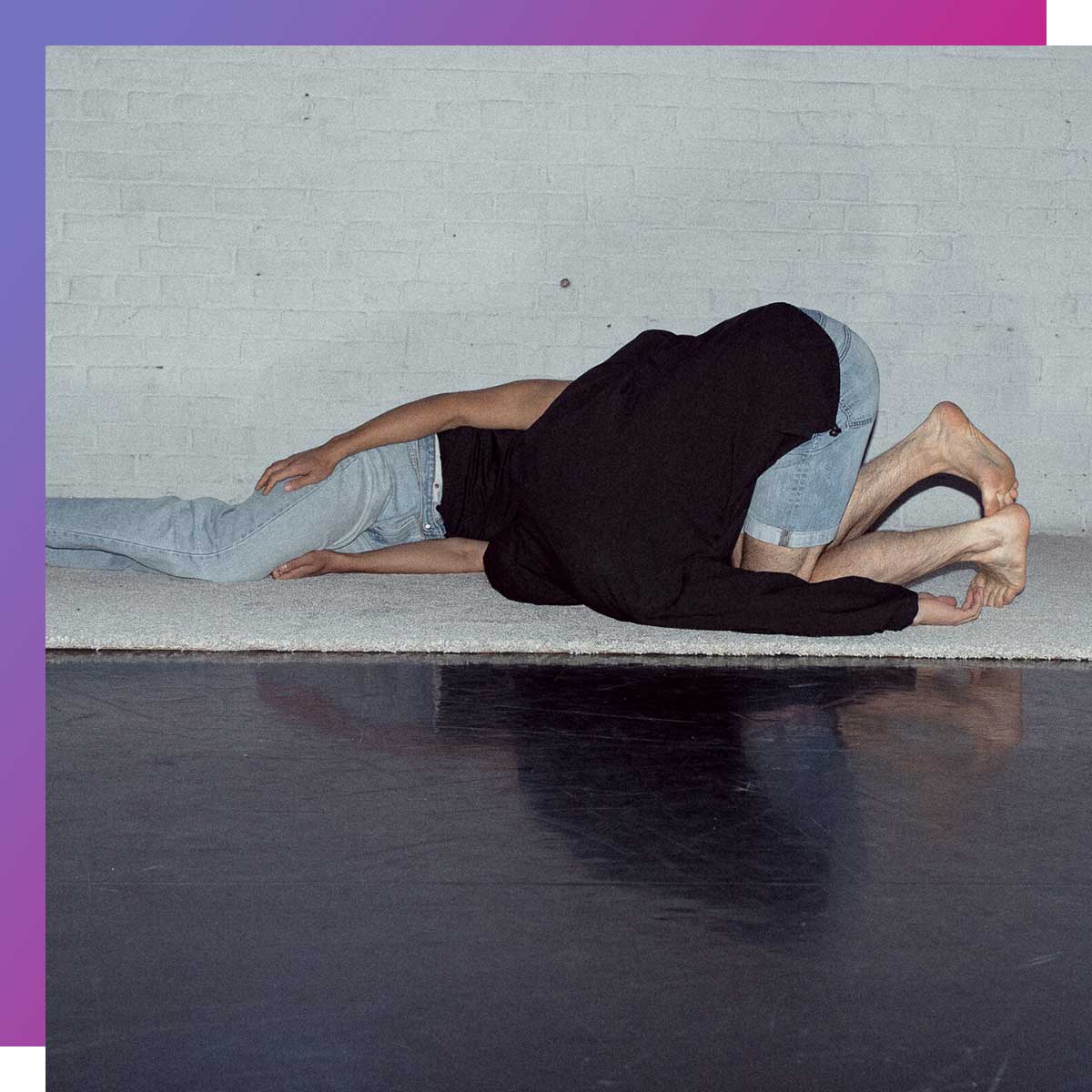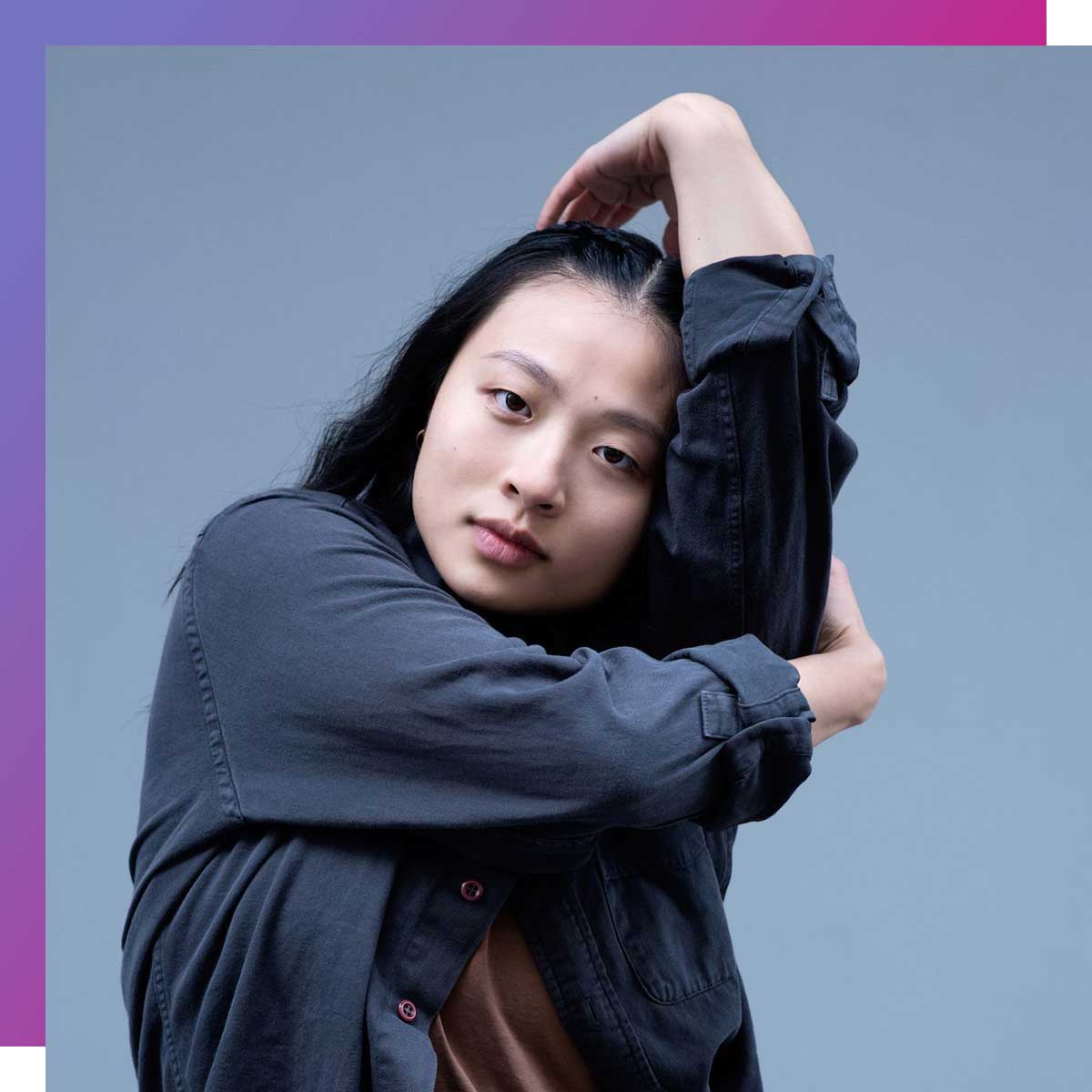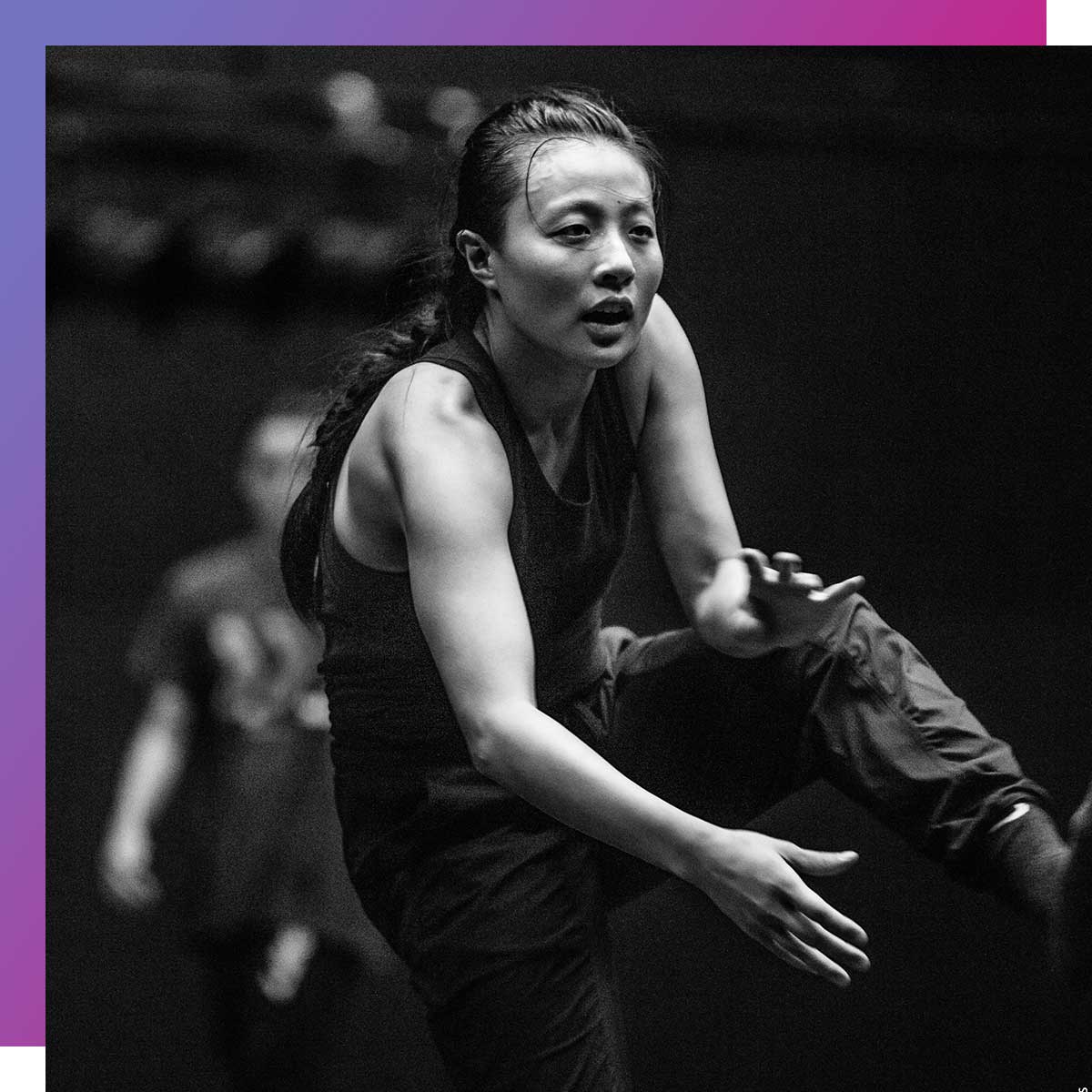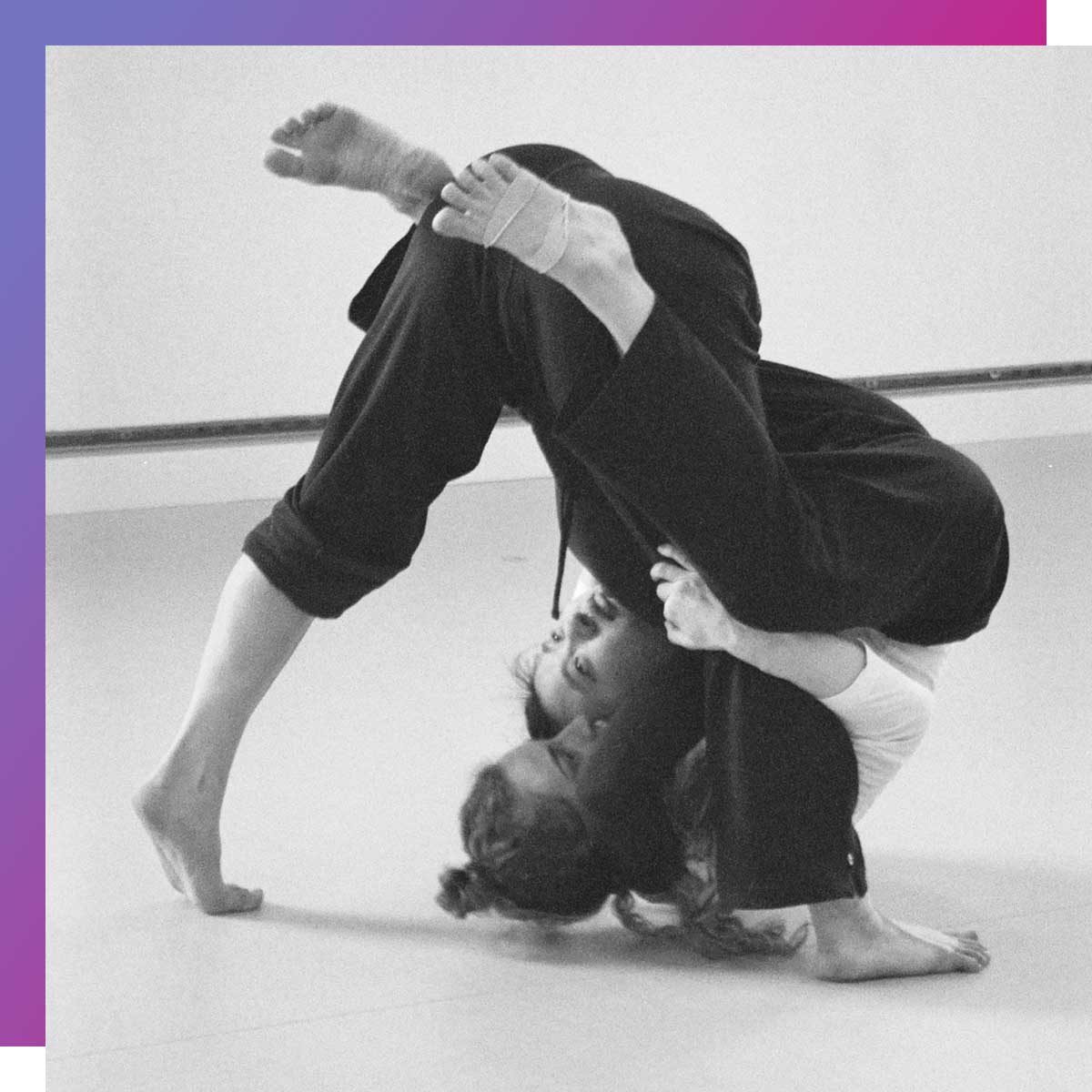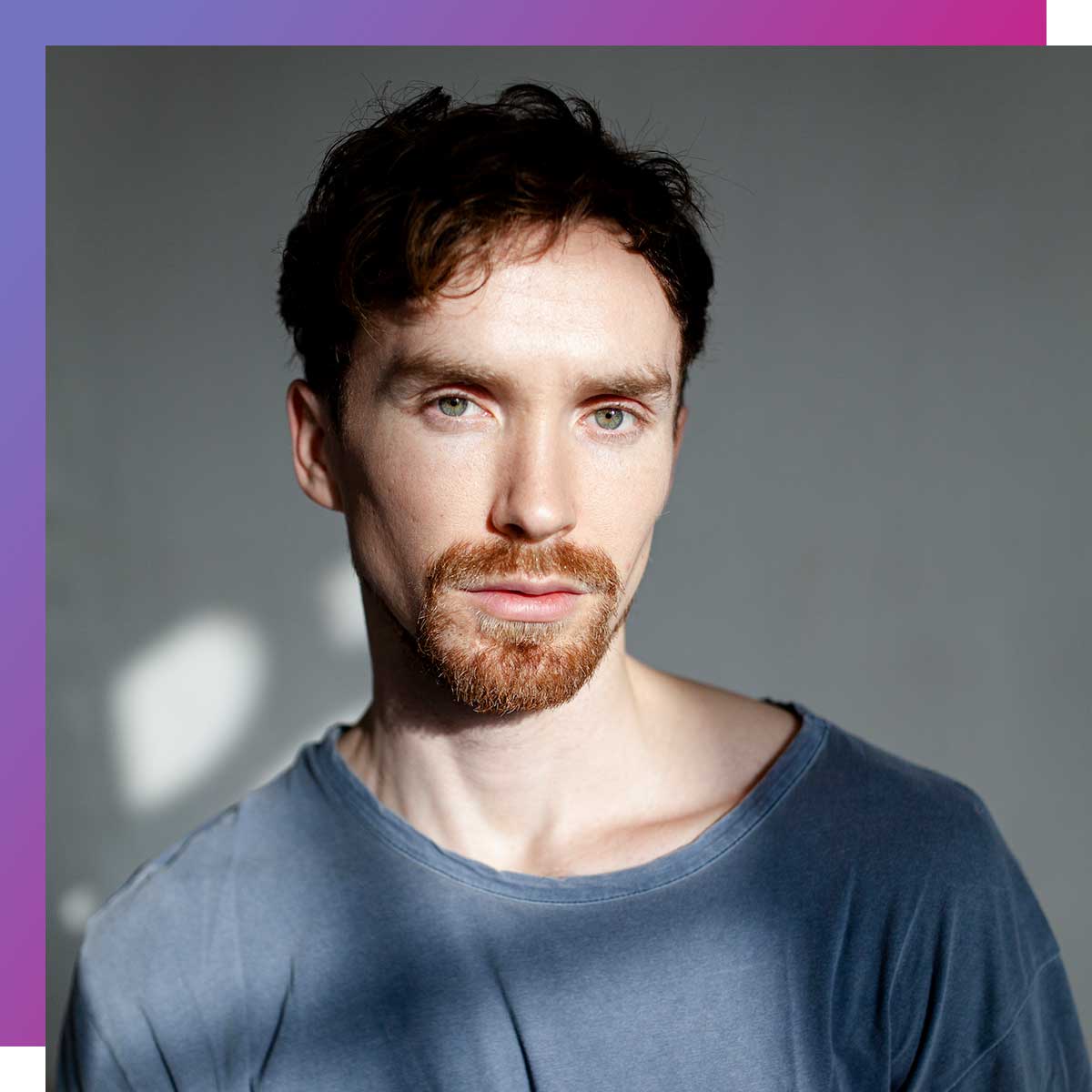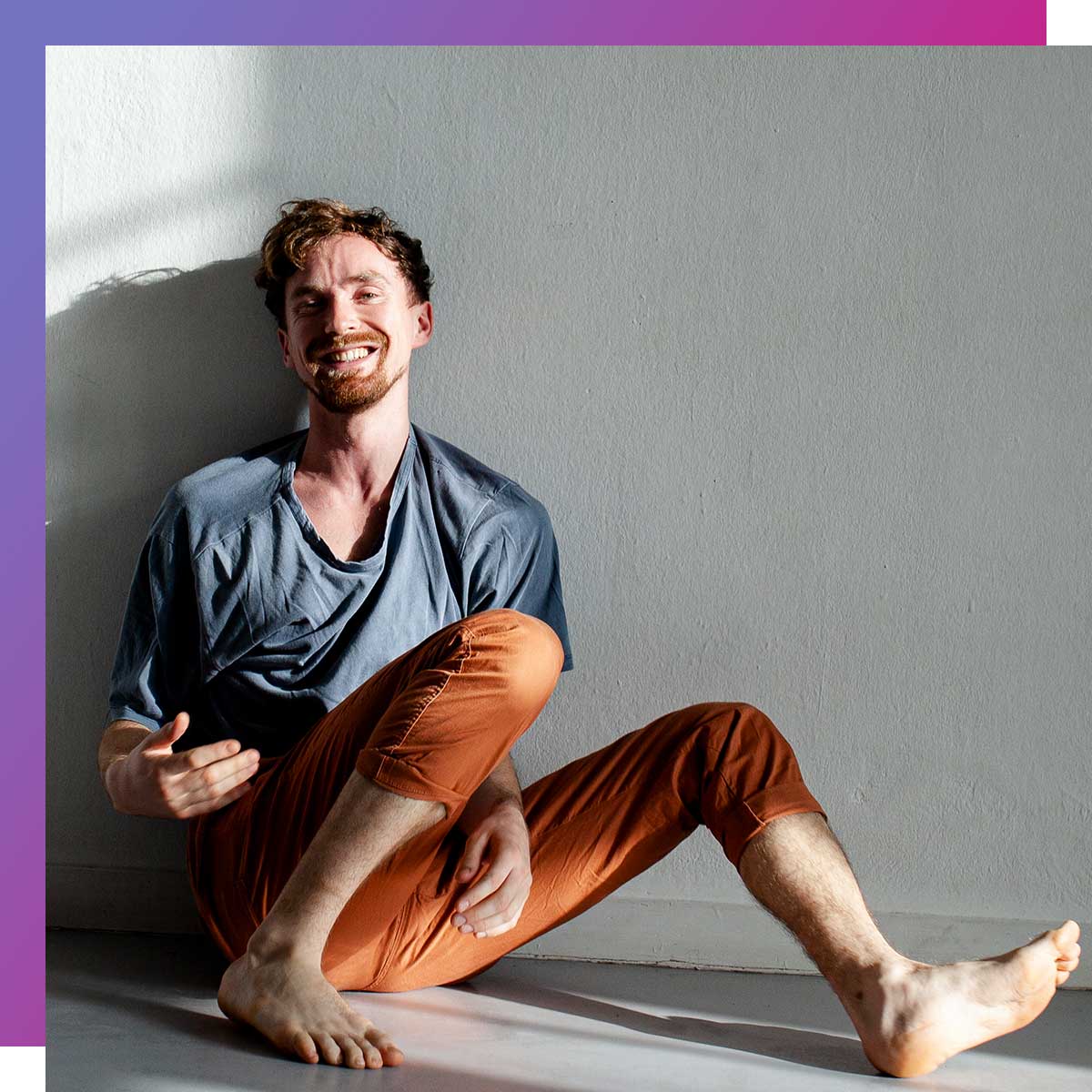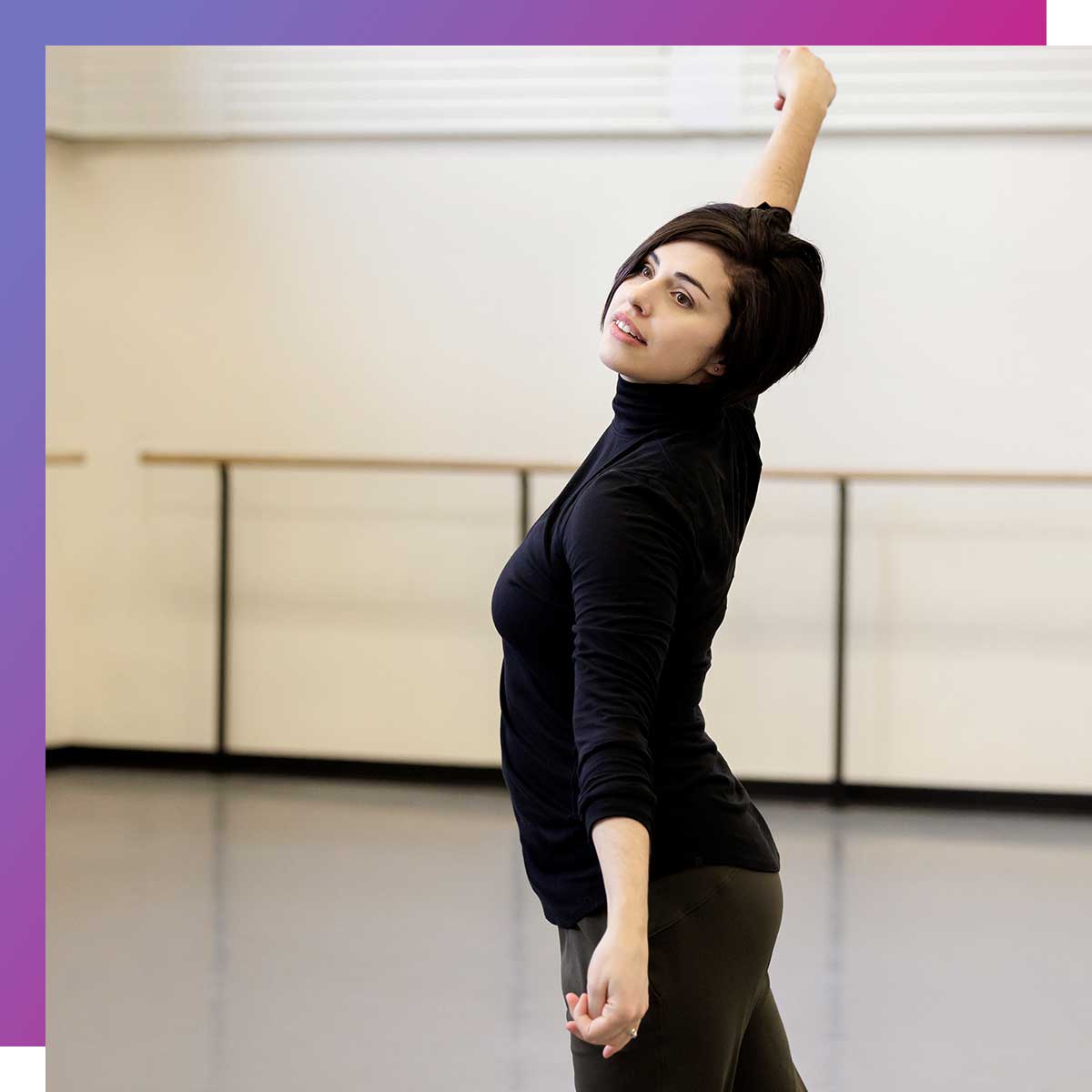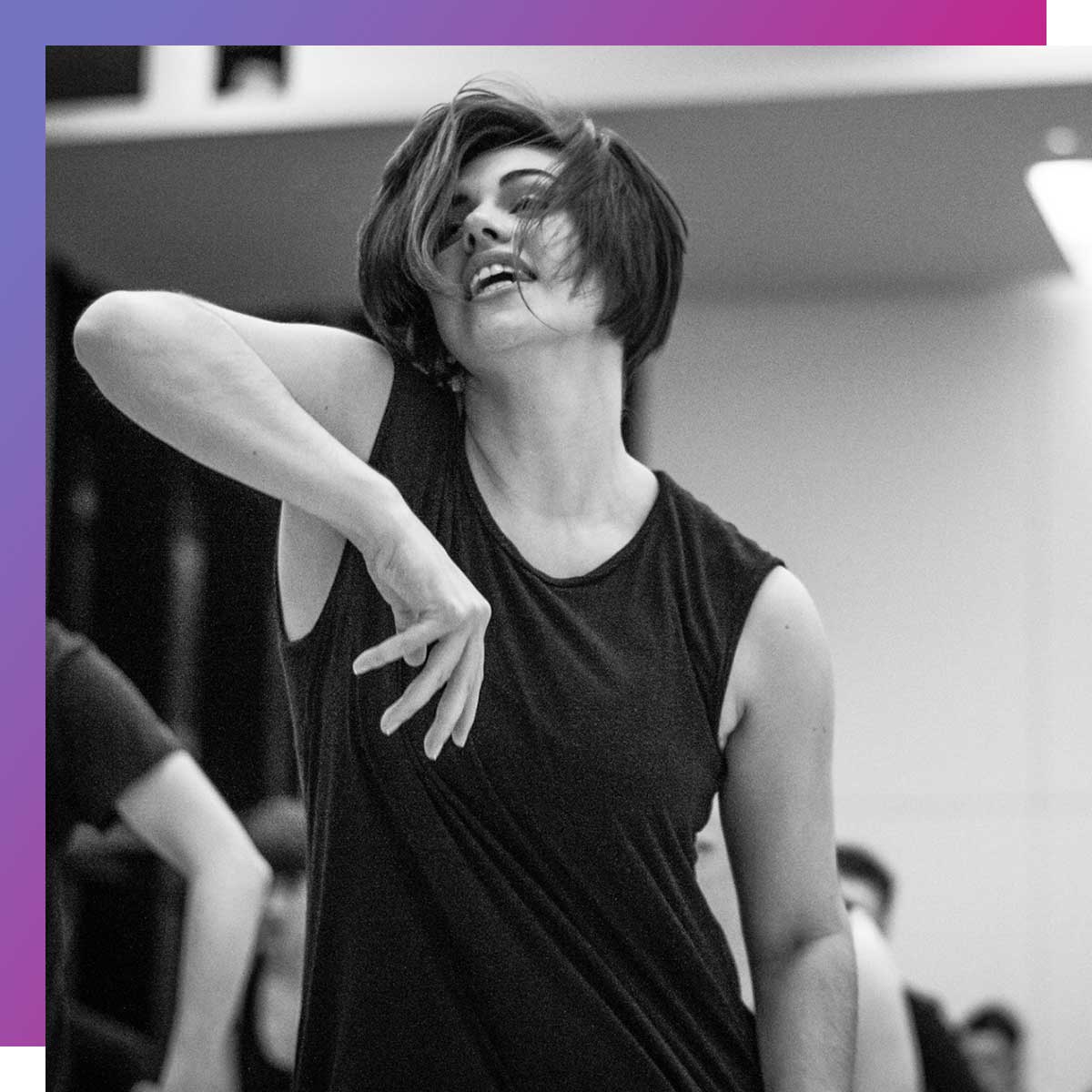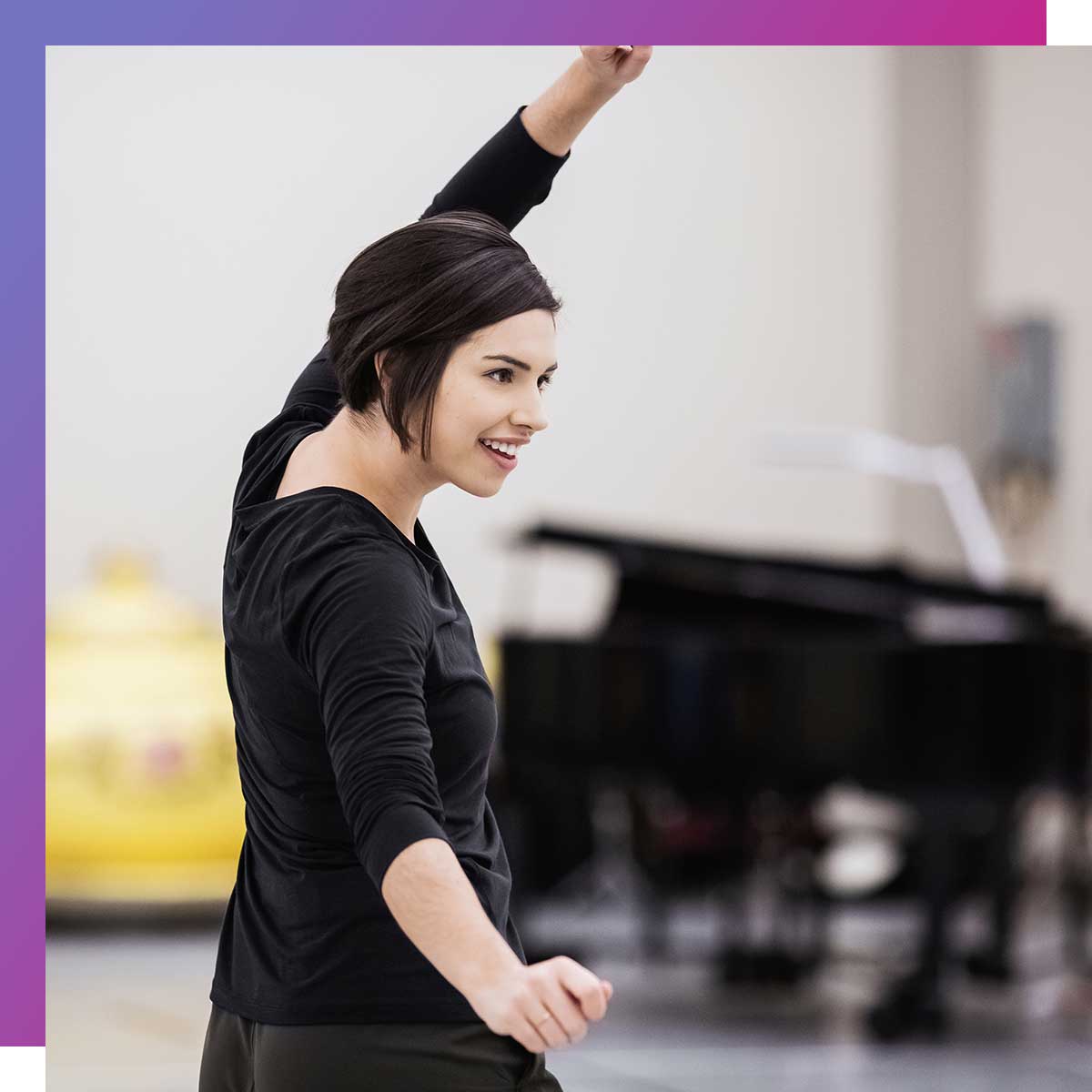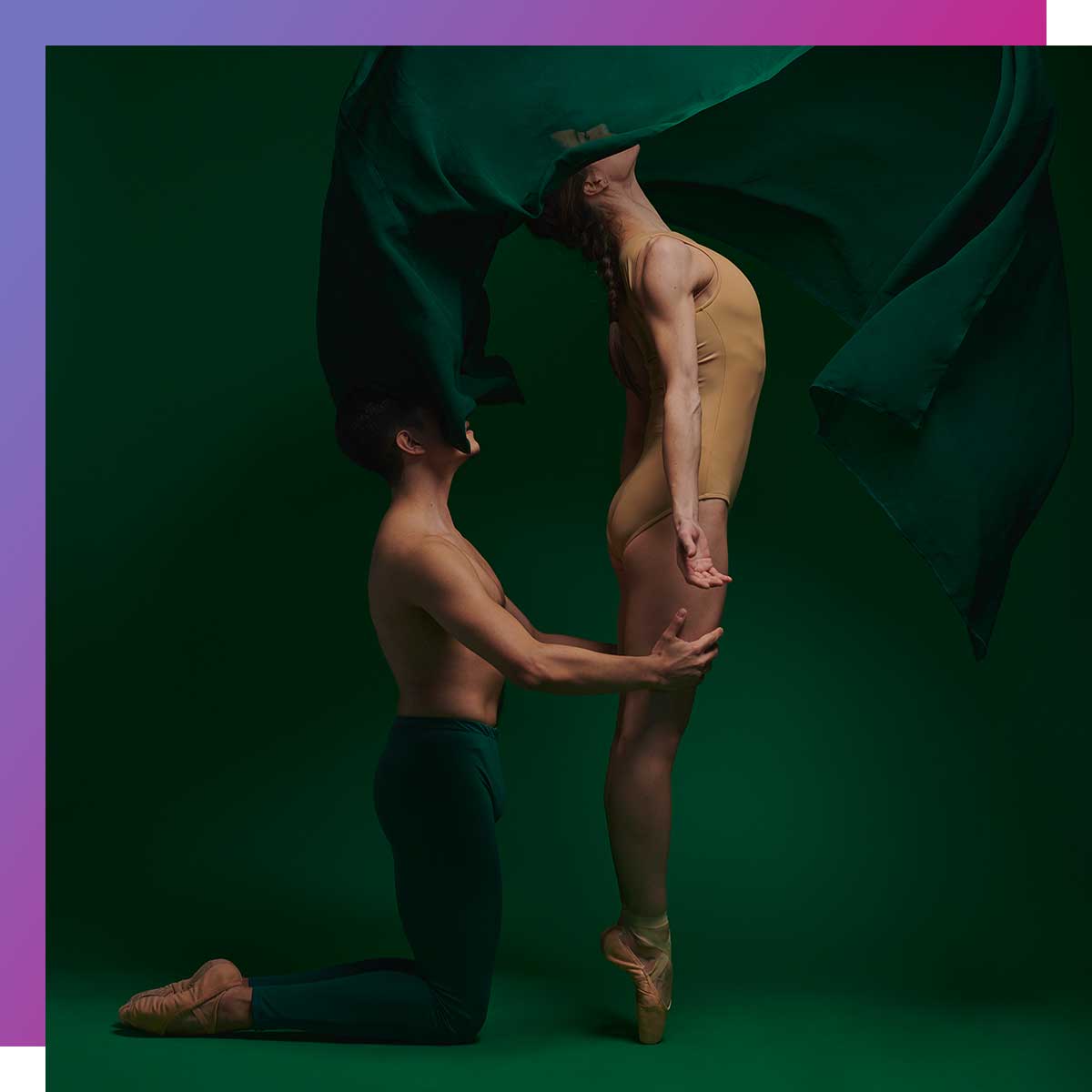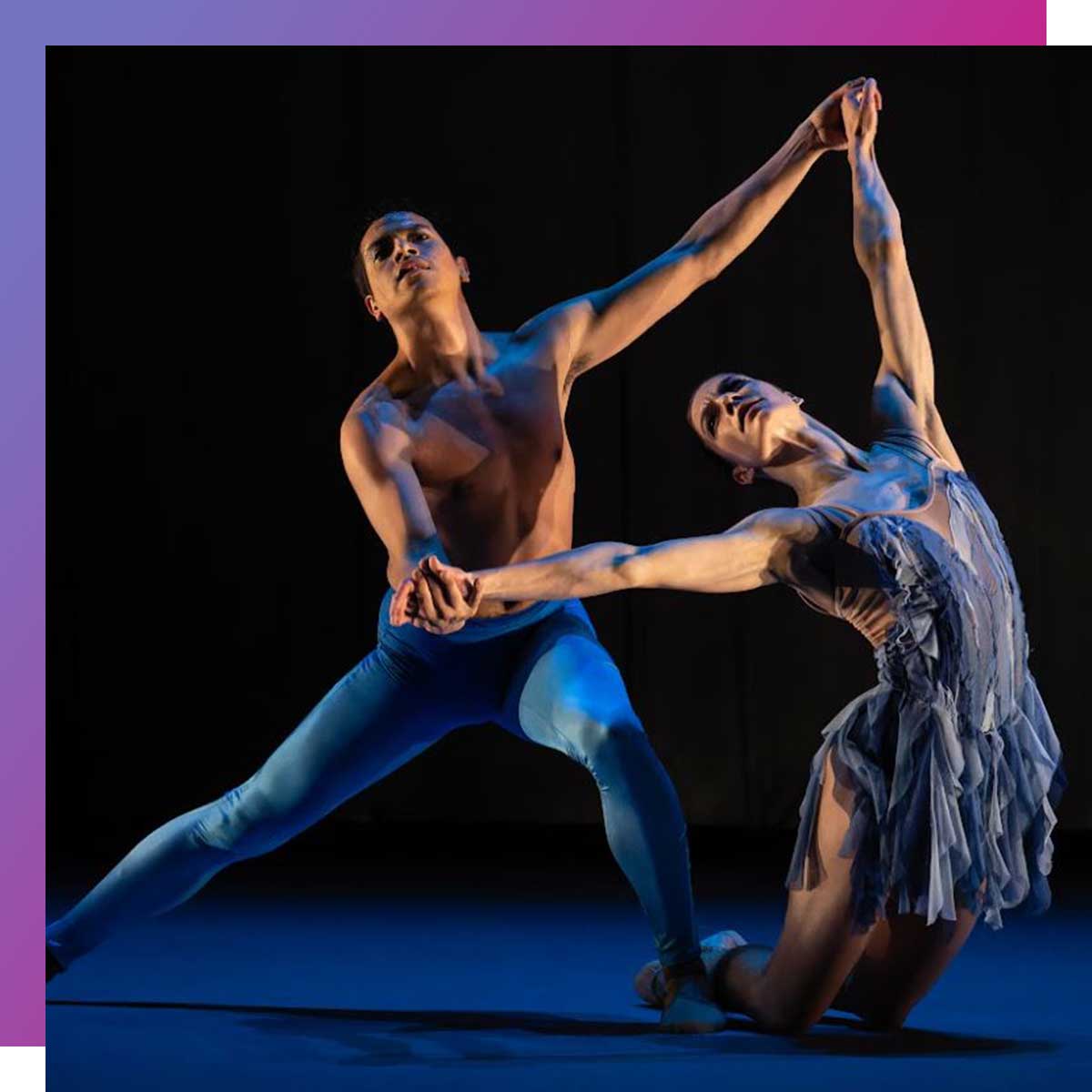The Art of Dance: Alumni share their passion for dance performance
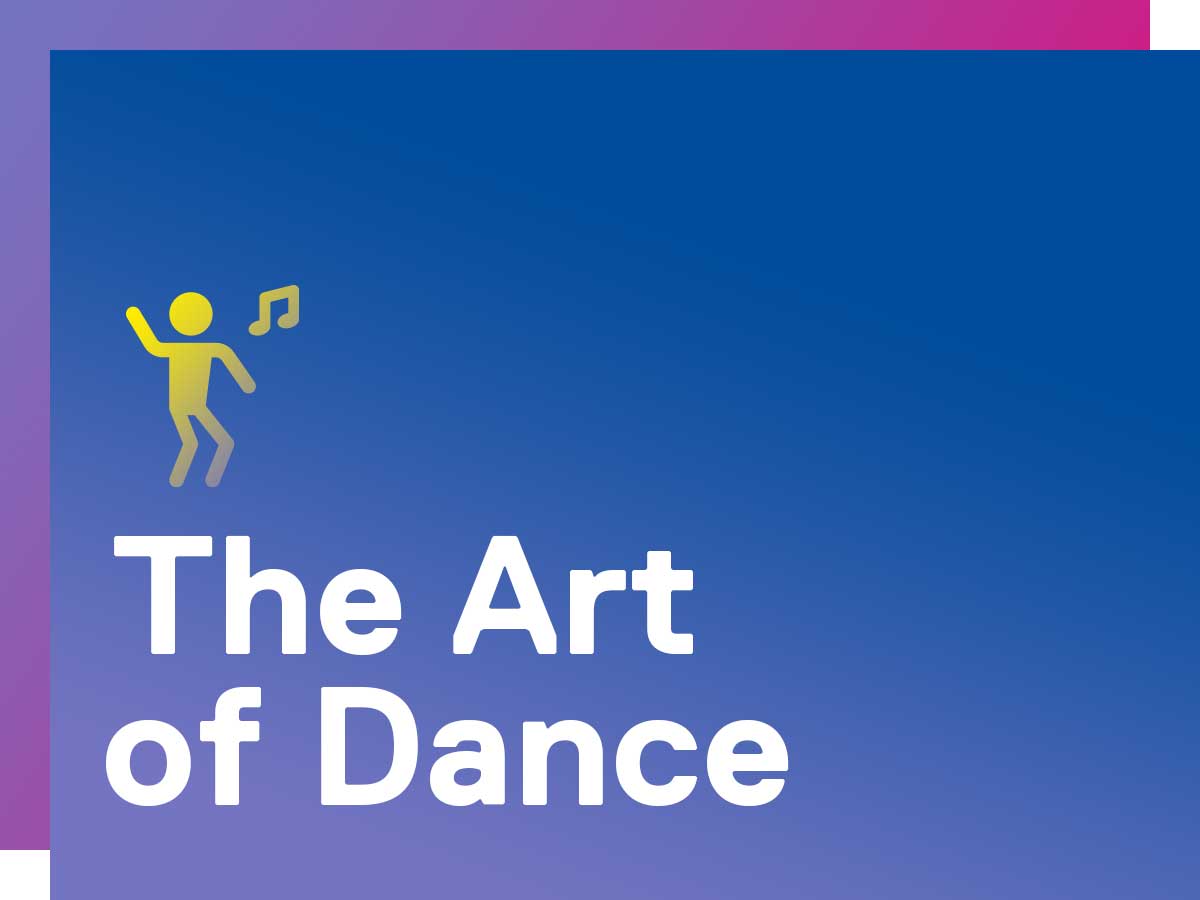
Initiated in 1982 by the International Dance Committee of the UNESCO International Theatre Institute (external link, opens in new window) , International Dance Day falls on April 29 of each year. This annual celebration invites the world to celebrate dance, revel in the universality of the art form and bring people together with a common language — dance.
In honour of International Dance Day, meet a talented group of Toronto Metropolitan University (TMU) alumni from the School of Performance (opens in new window) as they share their career influences, advice for aspiring artists, what they’re working on, and more.

Justin de Luna
Theatre Performance ’15
Dance Artist
GTA-raised Justin de Luna (external link, opens in new window) is a queer millennial currently based in tiohtià:ke / Mooniyang or so-called Montréal. His dance career has been articulated through interpretation, creation, collaboration, curation and rehearsal direction. Upon graduation from the School of Performance in 2015, Justin was fortunate to receive The Hnatyshyn Foundation’s Emerging Artist Grant, funding his attendance at ImPulsTanz - Vienna International Dance Festival that very summer.
After his studies, Justin spent two seasons with Toronto Dance Theatre before moving to Montréal in 2017. Today, Justin’s practice is mainly expressed through his interpretation work. Since 2020, Justin has co-curated Studio 303’s Queer Performance Camp alongside Winnie Ho, with whom he has also been making collaborative performances. His collaborative work has also been touched by dear friend, peer and fellow TMU alum Fran Chudnoff.
What made you decide to pursue a career in performing arts?
When I was younger, I always loved dancing to the radio hits at the time — the Vengaboys, *NSYNC, Destiny’s Child — but my biggest idol was none other than Ms. Britney Spears. I remember watching her concert tours and admiring her dancers, wishing that that would be me one day. I specifically remember her Onyx Hotel Tour TV special, Live in Miami, which aired on MuchMusic numerous times. I wanted to tour the world supporting a major pop act. When I was coming to the end of high school, So You Think You Can Dance was at its peak influence on my generation. I had the dream of moving to Los Angeles and pursuing the commercial dancer dream, but I felt like I wasn’t quite ready to tackle that straight out of high school. I opted to attend the dance program at TMU to gather some skills and experience first. It was at that program that my interests shifted. I was exposed to the world of concert contemporary dance and found myself pursuing dance as an artistic medium. This is where I find myself today.
What advice would you give to aspiring professional dancers?
When you’re a professional dancer, dancing and performing are two practices that come with the job, and two distinct practices at that. As much as we practice dancing (in rehearsals or in class), we must also practice performing. This is trickier to do as there aren’t nearly as many frames for practicing performance as there are to practice dancing, so you’ll have to get creative on finding or making opportunities to do so. It’s easy to focus solely on technicality and virtuosity when you’re training to become a dancer, but it is equally important to practice performing. It is its own muscle we need to train as well.
What is your favourite aspect of performing?
My favourite aspect of performing is that with each production comes an opportunity to present myself in a new and different way. As the choreographer offers a frame or set of conditions/relations to work with, I take pleasure in tackling the challenge of inserting myself onto these canvases or empty containers, colouring them with myself by way of my creative choice making.
My interpretation skills or my ability to shape-shift or be a chameleon simultaneously is my superpower, as well as the crux of the pain I carry on my back. Fitting myself into moulds externally designed by another is a skill I’ve come to acquire, become good at and make a respectable living off of. As a queer person of colour, it’s both a troubling and empowering position to be in. For me, it becomes a practice of resilience and in a certain regard about self-love; insisting on troubleshooting the situation until my light, my spirit, Justin the subject, shines through in full glory.
What do you hope audiences take away from your work?
I will specifically speak about my interpretation work. I hope my work can offer a kind of horizon for one to feel their own positionality to the materials, themes and ideas, the performance and/or what the choreography proposes you to focus on or bring your attention to. As the piece and myself (the dancer) traverses and touches upon these ideologies and themes, my body, my subjectivity and my performance can offer one kind of reference point for the public to witness, to sit with and pass through, and then question and feel their own relationship to the things gathered into the performative space; perhaps as a generator for (self-)reflection. From my position, this all sounds a little bit self-righteous, but then again in order to be an artist one has to be a little bit self-righteous.
Did you have a favourite professor or experience at TMU? If yes, who, what, why?
I wish not to single out a professor because I believe each one of them has made a lasting imprint on my embodied trajectory as a dancer. However, I will give a special mention to two professors, in no particular order. I’d like to bring up Nadia Potts, who encouraged me to dance like I had a story to tell, to move as if I have something to offer to the world. And to Vicki St. Denys (opens in new window) who gave me so much love and support as I passed through a turbulent time within my final year in the program. I am endlessly grateful for these two.
I’d also like to mention two artists that I encountered during my run in the program who have inspired me and impacted me deeply on what it means to be an artist. These are friends and peers who were my reference point on artistic expression at the time. They stood out in the most beautiful way. They had something to say and something to offer: Fran Chudnoff (external link, opens in new window) and Kevin Fraser. These two were elemental in inspiring the construction of my artistic voice. I don’t know what I would’ve become had I not met them. These two were a beacon of hope, possibility and greatness. I’m getting a bit sentimental now but I’ll also give a special mention to Lukas Malkowski and Christopher Valentini, who were like brothers to me during my time in the program.
Find Justin on Instagram (external link, opens in new window)
Image credits: Claudia Chan Tak, David Wong, Fran Chudnoff

Judy Luo
Theatre Performance ’20
Dance Artist
Judy Luo (external link, opens in new window) was born in Fujian, China and immigrated with her family to Toronto at the age of four. As a child, she could not help but wiggle and move her limbs — not much has changed. Her love for people and movement led her to playgrounds, basketball courts, frisbees and eventually, the dance studio. Judy has had the privilege of performing works by Anne Plamondon, Peggy Baker, Charles Moulton, Merce Cunningham, Bobbie Jene Smith and Or Schraiber at Fall for Dance North whilst completing her BFA in Performance Dance at TMU. Following graduation, Judy moved to London, U.K. to join Rambert2, performing and touring works by internationally acclaimed choreographers Micaela Taylor, Sharon Eyal and Gai Behar, Benoit Swan Pouffer, and Megan Lawson.
Judy currently collaborates alongside Liam Francis, Nova Bhattacharya and Anne Plamondon, partaking and presenting in their projects to local, national and international audiences. Beyond borders, Judy seeks to build and bridge communities through shared desires and experiences.
As a performer, educator and rehearsal director, she marvels at the body’s intelligence and delights in sharing this fascination with others.
What made you decide to pursue a career in performing arts?
The desire and curiosity of connecting to others whilst exploring my sense of self through the body is what drew me to dance. A career in the performing arts is a result of this initial and continuous desire. In some ways, it didn’t seem so much like a decision but rather something I could not not do. I hadn’t witnessed many others who looked like me or shared a similar upbringing as me, so I wanted to test if there could be space for me and the things I carry in this field.
How can movement through dance benefit our mental health and well-being?
Dance is one of the few places where arts and athletics meet. From a social and emotional perspective, having this medium to express experiences within that haven’t quite yet been decoded into words can be so liberating and cathartic. Getting to share this experience whilst others partake as well can create a great sense of support and community. From the physical standpoint, what better way to get the body and energy moving than to some great music! The gym can be great, but have you ever gotten lost in time, dancing with those you love?
What is your favourite aspect of performing?
In discussion with some friends, we learned that our joy is most complete in the moment of sharing! I love “performance” mainly due to the fact that I get to share it with others. It feels like a big thank you, and thank you for being here to witness this journey with me in this fleeting moment. The spontaneity and real-time decision-making within the types of performances I partake in also make the experience of performing quite thrilling.
What do you consider to be the most important traits to have as a dancer?
I suppose this trait extends to beyond just the role of dancer, but especially within the role of “professional dancer,” I’d say it’s the ability to listen and observe.
Why do you believe dance is such a powerful art form?
I believe dance is powerful because it is a direct line of multi-layered communication between those partaking. With a great deal of vulnerability, there’s nothing between one whole being and another. It’s all of me, all of you, and potentially the space in between. The instrument is us. Fully embodied, we teeter at this edge, the closest we could be to being fully known.
Follow Judy on Instagram (external link, opens in new window)
Image Credits: Grace Richardson, Sacha Grootjans, Camilla Greenwell

Lukas Malkowski
Theatre Performance ’16
Dance Artist and Choreographer
Lukas Malkowski (external link, opens in new window) is a CODA (Child of Deaf Adult), performance-maker based in Berlin. He has performed in John Wick 4, CTM Festival (Berlin), Babylon Berlin, the Rodeo Festival (Munich), Festival TransAmérique (Montréal) and the Schrittmacher Festival (Holland).
Lukas’s choreography and teaching is shaped by the embodiment of physics, voice and sign language. He has choreographed ambient sets, music videos and films for Sam Slater (Joker original soundtrack), LBT and 7th Plain (Luke Slater).
Flowmentum, Lukas’s movement practice, is driven by social dialogue and physics embodiment using sight and touch. He has taught and performed at festivals, companies and schools in Toronto, Montréal, Halifax, Berlin, Kassel, Munich, Slovakia and Mexico City.
Since attaining his BFA in dance performance at the School of Performance (opens in new window) , he has worked with Naishi Wang, Ceren Oran, Toronto Dance Theatre, Wang Ramirez, Staatsballett Berlin, Sasha Waltz & Guests, Jasmine Ellis, Diane Borsato, Adelheid, Mocean Dance and Deaf Spectrum.
What made you decide to pursue a career in performing arts?
Since I started dance and music, I’ve never felt like pursuing other things. I started dancing at Rosedale Heights School of the Arts as a music major. When I was 17, I was majoring in dance and music. I asked a student which one I should pursue. He asked, “Which one are you spending more time doing right now?” The answer was dance. I chose dance over music because I liked training with other people in classes and I didn’t love practicing trumpet alone all the time.
What is your favourite style of dance and why?
Currently, my favourite styles are contemporary, waving, krump and break(dance). I love the fluidity of contemporary and waving, the expressiveness and dynamics of krumpers and the way breakers generate momentum using centrifugal force.
How can movement through dance benefit our mental health and well-being?
I feel healthy when I am in my body. Moving and dancing gets you into your body through activating your senses of touch, hearing, sight, even your sense of taste and smell. Dance can also teach us how to share space and move together. It is a means of universal communication and building community. I have made so many friends through dance, not just professionally, but also dancing at concerts, clubs and raves.
What are you working on right now? What are you working towards?
I am currently working in Canada and Germany. Recently, I was dancing in the Berlin Club scene for the movie, John Wick 4. I am currently touring an emoji duet: “Face to Face” with Naishi Wang (external link, opens in new window) internationally. I produce my own films, direct/choreograph productions and collaborations with Deaf ASL artists, musicians, directors and choreographers. I hope to continue choreographing, performing and movement directing for live theatre, visual art, concerts and film/television sets, ranging between spectacular entertainment and experimental performance art.
What advice would you give to aspiring professional dancers?
Dance is hard. Follow your love. Train in all the styles you love, with mentors you admire. Find projects you love, respectful colleagues and practice compassion. I used to think that if I wasn’t accepted by certain schools and companies I wouldn’t be “successful”. I wish I had abandoned that mindset earlier. Your career likely won’t turn out the way you expect it to. It could turn out better than you imagined.
Learn more about Lukas on his website (external link, opens in new window) .
Image credits: Alvin Collantes, Pippa Samaya

Alysa Pires
Theatre Performance ’12
Choreographer
Alysa Pires (external link, opens in new window) was born and raised on the traditional territory of the W̱SÁNEĆ people near Victoria, B.C. Her works have been performed by companies such as Alberta Ballet, Ballet Kelowna, Ballet Edmonton and the National Ballet of Canada (external link, opens in new window) , where she held the position of Choreographic Associate from 2019-2022. Alysa’s full-length adaptation of Macbeth premiered at Ballet Kelowna in 2022. Her first work for Ballet Kelowna, MAMBO (2018) (external link, opens in new window) , has become a signature work for the company, being performed around the world including at Fall For Dance North in 2018. Alysa was one of the 2017 winners of Northwest Dance Project’s International Choreographic Competition.
Her company, Alysa Pires Dance Projects (external link, opens in new window) , made its critically acclaimed full-length debut with “Exterminating Angel” at the 2016 Toronto Fringe Festival. Upcoming projects include a commission for New York City Ballet, (external link, opens in new window) which will premiere at Lincoln Center in May 2023.
What made you decide to pursue a career in performing arts?
My parents say that I was always dancing. As soon as I could stand, I was spending every spare moment dancing. I couldn’t stop. I was also exposed to the performing arts from a young age through my mom who taught drama and musical theatre. I don’t remember a time when I didn’t know that I wanted to be a dancer. I always knew. It was almost inevitable.
What advice would you give to aspiring professional dancers?
My advice for any aspiring artist would be to seek inspiration and joy outside of your art form. Creativity requires space for rest and reflection. We spend so much time hustling to get the next gig that sometimes we forget to leave space to refill the tank. We also need to find fulfillment outside of our work because the arts are a fickle place. If your entire sense of self hinges on the success of your creative work, you will be battered by the inevitable highs and lows of this career. There are natural ebbs and flows that we need to be able to withstand. Your life doesn’t stop during the periods where the work dries up or when you lose inspiration.
What is your favourite aspect of choreographing?
My favourite part of what I do as a choreographer is the spontaneous collaboration in the studio. When ideas that have been percolating in my mind start to materialize. When the dancers and I are all working toward a common goal. When we make a new discovery or find a solution to a problem through our work together. These are the moments I live for. I often describe the creative process as an archeological dig. There’s a lot of dirt and sand that we need to sift through, but eventually we can uncover gems.
Why do you believe dance is such a powerful art form?
I believe dance is a powerful art form because it transcends language. Regardless of identity, age or ability, we all have bodies. We all have experience moving those bodies through the world. We know the visceral feeling of getting bad news and feeling a pit in our stomach, or being so thrilled that we want to jump up and down. Our bodies carry our stories even more than words do. Dance can access and interpret these emotions and these stories on a level beyond language. In many ways, dance is its own universal language.
Learn more about Alysa on Instagram (external link, opens in new window) .
Image credits: New York City Ballet, Adam Sakiyama, Karolina Kuras

Kunal Ranchod
Theatre Performance ’13
Choreographer
Kunal Ranchod (external link, opens in new window) is a choreographer and graduate of Toronto Metropolitan University and L’École supérieure de ballet du Québec. His works have seen the likes of international stages including: Canada, United States, India and Japan. He has choreographed various works for The National Ballet of Canada, The Central Pennsylvania Youth Ballet, Radio Canada, The National Film Board of Canada, The Luminato Festival, Ballet Kelowna, Ballet Ouest de Montréal and most recently Toronto Metropolitan University. In 2017, Kunal launched his own company, Compagnie Kunal Ranchod (external link, opens in new window) . The company has been fortunate to receive residencies and grants through Danse a la Carte, L’École supérieure de ballet du Québec, Conseil des arts et des lettres du Québec, Les Grands Ballet Canadiens and Canada Council for the Arts. In June, Ranchod will premier a dance film titled “Nine Yards” that explores the colonization of the saree; the film will premiere at Spadina Museum in Toronto on June 24. It will remain on display until July 21, 2023.
What advice would you give to aspiring professional dancers?
The best advice I can give to aspiring professional dancers is to stop comparing yourself to others, stay humble and always keep learning.
Is there a choreographer or dancer you admire the most?
I really admire Marianela Núñez, she is undoubtedly one of, if not the best ballerinas of our time; yet even with this title she is supremely humble, extremely hardworking and forever striving to learn and grow. She oozes pride, humility and the joy of dance.
What is your favourite aspect of performing?
Although I’ve retired from dancing and now primarily work as a choreographer and rehearsal director; my favourite aspect of performing was experiencing the magic of telling a story and diving into a character. As dancers, we are privileged to experience the euphoria of performance, it’s a feeling unlike any other.
What do you hope audiences take away from your work?
As a South-Asian and proud BIPOC, LGBTQ+ choreographer, I want to inspire and use my unique circumstances to create ballets that explore stories from people who look and sound like me - stories that are rarely told within the ballet idiom. A few weeks ago, I premiered a new work titled “An Ode to Kiran & Pradeep”, this mixed program (a love letter to my parents Kiran & Pradeep) featured 3 ballets that each represented a different facet of my parents' impactful journey to calling Canada home. All three ballets were inspired by and interlaced with anecdotes that painted my childhood; stories involving love and cultural identity, the lifelong attachment to one’s birthplace and finally a story about the journey of a refugee. Often times, when we think of ballet we think of tutus and fairies, however, for me ballet is vessel to tell stories of personal experience; for me ballet is so much more than just pretty dancing.
Why do you believe dance is such a powerful art form?
I believe dance is a powerful art form because it can tell stories that words alone cannot do justice too.
Learn more about Kunal on his website (external link, opens in new window) .
Image credits: Damian Siqueiros, David Wong
